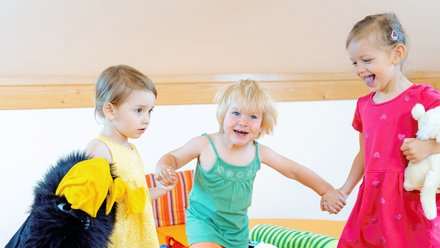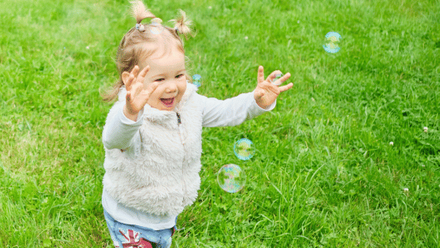Thinking about safer sleep
Working in early education and care is about so much more than just providing a childcare provision for families. Whilst education, learning and development are rooted in early years settings, routines of care are integral to best practice. For those of us working with younger children, nap times and sleep schedules can dominate how we organise the day to ensure babies and toddlers receive the best care whilst making sure that they still receive the same opportunities as those who aren’t asleep.
Naptimes require a great deal of attention – not only for the important role they play in healthy development and wellbeing but also to ensure that the ways that sleep is approached in setting are the safest they can be.
Safer sleep is all about ensuring children are in the best place possible for their rests in setting and supporting families to follow safe practice at home, too. Despite the growing research into sleep and associated risks, as well as greater promotion to share safe practice, over 200 babies still die every year due to Sudden Infant Death Syndrome (SIDS) or Sudden Unexpected Death in Infancy (SUDI). We’re not sure what exactly causes SIDS/SUDI but the decline in cases over the years have been largely credited to the growing awareness of sleep practices for young children.
Safer sleep advice
Keeping advice on safe sleep simple, clear and informative is really important to ensuring a consistent message that is easy to follow and accessible for all.
The Lullaby Trust work to support professionals and families in promoting safer sleep practices for young children. Their safe sleep advice provides helpful ways to implement this into children’s sleep, both in and out of the home.
Firm and flat mattress
Young children’s airways are fragile things! Ensure any sleep space is firm and flat to prevent injury. This should be free of soft furnishings and not on a slope. This also means that children should not be left to sleep on unstable bedding, such as bean bags, or left to sleep in a car seat or pram if not in transit.
Keep the space clear
Make sure the sleep area is clear of anything that the baby or child might roll onto or try to investigate. This includes things in the immediate vicinity of the sleep space, such as pillows and duvets or large comforters, but also hazards in the wider surrounding, such as nappy bags or items that can be caught up, like dressing gown ropes or blind strings that can heighten risk of suffocation.
Sleep on their back and feet to foot
Babies under 12 months should always be positioned on their back to sleep in a stable position. They should not be on their side or propped. For children with blankets, position their feet at the bottom of the bed to prevent them wriggling underneath the cover. This can also be further prevented by using sleep bags with young children, ensuring they are securely fastened as directed.
Monitor the temperature
The ideal room temperature for young children should be between 16 – 18 degrees and bedding should reflect the needs of the time of year, using a thinner material sleep bag or blanket in the warmer weather but always ensuring baby’s head is not covered to prevent overheating. This should also be reflected in the clothing that children wear too. For naptimes, think about providing thinner blanketing and stripping outer layers on in the summer months, whilst providing additional heating and thicker layers for the winter.
Monitor closely
At home, the Lullaby Trust recommend that babies sleep in their own space, such as a cot, but in the same room at their caregivers until at least six months old. In setting, this recommendation should be recognised for all young children and sleepers should be monitored closely to ensure safety at all times. You can use a sleep checking chart to help facilitate communication between staff members if more than one member of staff is supporting sleep time, but it is vital that children are closely observed and kept safe at all times.
Closing thoughts
When it comes to your professional role and sleeping routines with young children, your influence spans far wider than the time a child spends sleeping in setting. Think about ways to communicate with those at home to support with practical advice for sleep time at home.
As with all best practice, please consult each child and their family before making changes to sleep routines and, if appropriate, seek medical advice.
Additional references
Nobody ever expects to encounter infant death, but the sad reality is that over 200 babies die every year from sudden infant death syndrome. For more information about safer sleep advice or for bereavement support following sudden infant death syndrome (SIDs) visit the Lullaby Trust or Safe Sleep Scotland.






